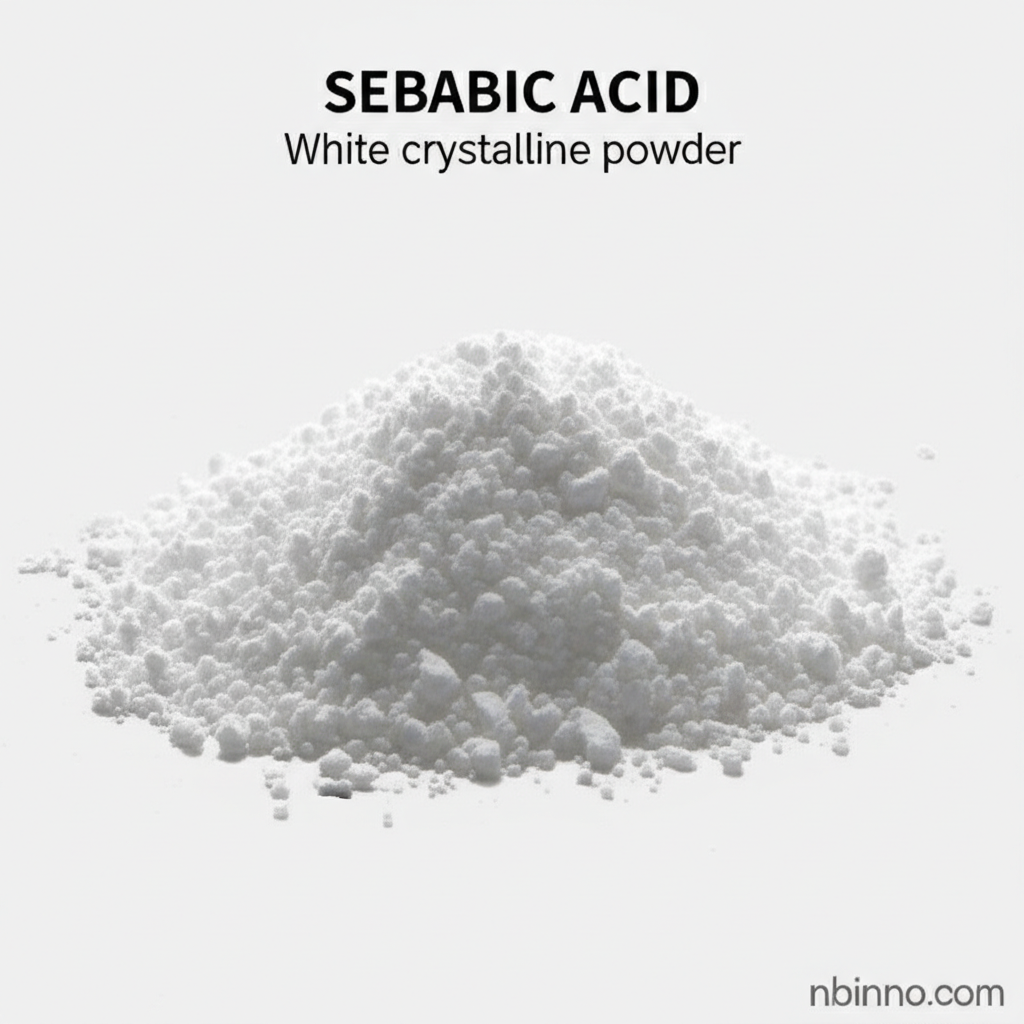Sebacic Acid (CAS 111-20-6): A Versatile Chemical Intermediate
Discover the core value of sebacic acid in plasticizers, polymers, and lubricants.
Get a Quote & SampleProduct Core Value

Sebacic Acid
Sebacic acid is a key C10 dicarboxylic acid derived from castor oil, serving as a crucial building block for various industrial applications. Its unique chemical structure enables the synthesis of high-performance materials and additives.
- Explore sebacic acid's role in creating high-quality plasticizers, enhancing material flexibility and durability.
- Understand how sebacic acid is a vital component in the production of advanced polyamides, contributing to durable and resilient polymers.
- Learn about the use of sebacic acid in formulating high-temperature lubricants, ensuring performance in demanding conditions.
- Discover the application of sebacic acid derivatives in cosmetic formulations, offering emollients and conditioning properties.
Key Advantages
Bio-Based Sustainability
As a derivative of castor oil, sebacic acid offers a sustainable, renewable alternative for chemical manufacturing, aligning with green chemistry principles and reducing reliance on petrochemicals.
Exceptional Low-Temperature Performance
Sebacic acid esters, like Dibutyl Sebacate (DBS) and Dioctyl Sebacate (DOS), are renowned for their excellent flexibility at low temperatures, making them ideal for applications exposed to cold environments.
Versatile Chemical Reactivity
The dual carboxyl groups in sebacic acid allow for a wide range of reactions, enabling the production of diverse esters, polymers like polyamides and polyesters, and other functional chemicals.
Key Applications
Plasticizers
Sebacic acid is a primary raw material for producing sebacate plasticizers, valued for their low-temperature properties, good oil resistance, and use in PVC and synthetic rubbers.
Polymers (Polyamides & Polyesters)
It serves as a monomer for high-performance polyamides (e.g., Nylon 6,10, Nylon 10,10) and polyesters, used in automotive parts, piping, and adhesive applications.
Lubricants & Greases
Sebacic acid and its esters are utilized in formulating high-temperature lubricating oils and greases for automotive and metalworking industries.
Cosmetics & Personal Care
Sebacic acid derivatives act as emollients, conditioning agents, and solvents in skincare, haircare, and color cosmetics, providing a silky, non-oily feel.
